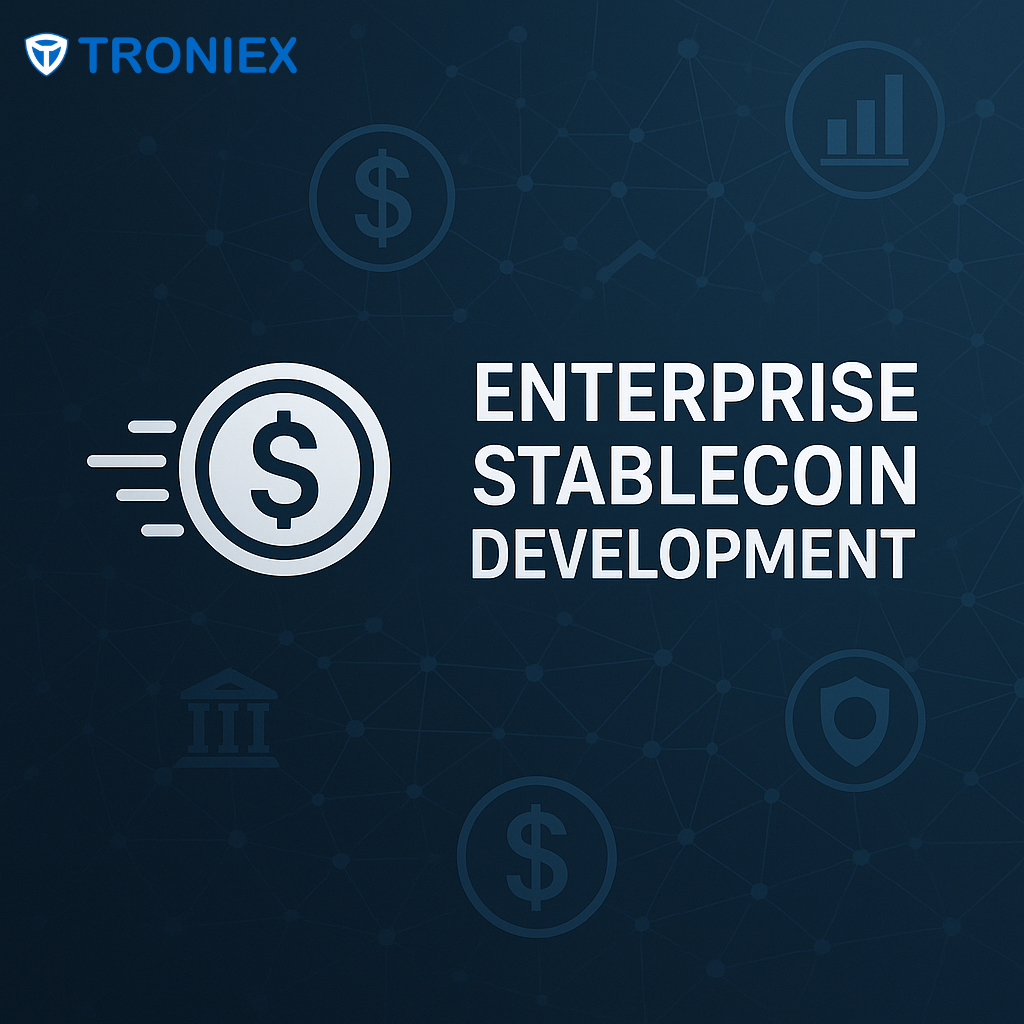Enterprise Stablecoin Development: The Future of Corporate Digital Finance
Introduction

Businesses are using blockchain-based solutions more frequently in the changing digital economy to improve transparency, expedite cross-border transactions, and streamline operations. The enterprise-grade stablecoin, a digitally native asset based on a stable value similar to fiat currency and created especially for usage in business ecosystems, is one of the most revolutionary breakthroughs. Enterprise stablecoins, as opposed to public cryptocurrencies like Bitcoin or Ethereum, provide programmable utility, regulatory alignment, and stability, which makes them perfect for cross-border payments, treasury operations, and business-to-business transactions. With the help of industry-tested best practices, real-world use cases, and professional insights, this paper provides a thorough approach to enterprise stablecoin development
Why Enterprises Are Embracing Stablecoins
Stability Meets Innovation
Because of their extreme volatility, traditional cryptocurrencies are not suitable for everyday business operations. In contrast, stablecoins are made to hold their value over time and are usually linked to fiat currencies like the US dollar, the euro, or a basket of currencies. Two major issues in business settings are this stability’s capacity to permit accurate accounting and lower transaction risk.
Efficiency and Cost Reduction
Interbank transfers come with fees, delays, and middlemen, particularly when they are cross-border. By enabling almost instantaneous settlement, stablecoins lessen dependency on correspondent banking networks or SWIFT. Payroll, supply chain financing, and vendor payments can all be automated with smart contracts, drastically lowering operating expenses.
Regulatory Visibility
Enterprise stablecoins, as opposed to public token initiatives, are created in regulatory sandboxes or in partnership with financial institutions, guaranteeing compliance to financial reporting, know-your-customer (KYC), and anti-money laundering (AML) regulations.
Types of Enterprise Stablecoins
1. Fiat-Collateralized Stablecoins
Backed 1:1 by fiat reserves held in regulated financial institutions. These are the most trusted for enterprise use due to their transparency and ease of audit.
Example: JPM Coin (by JPMorgan Chase) backed by fiat deposits, used for interbank transfers.
2. Crypto-Collateralized Stablecoins
Backed by overcollateralized digital assets (e.g., ETH). Though more decentralized, they pose volatility risks and are less favored by traditional enterprises.
Example: DAI (by MakerDAO) more common in DeFi than in enterprise.
3. Algorithmic Stablecoins
Use smart contracts and market incentives to maintain peg. Their lack of tangible collateral makes them riskier and largely unsuitable for enterprise-grade adoption.
Example: UST (collapsed in 2022), now used as a cautionary tale.
Key Components of Stablecoin Development for Enterprises
1. Blockchain Selection
Choosing the right blockchain is critical. Enterprises often opt for permissioned blockchains like Hyperledger Fabric, R3 Corda, or enterprise versions of Ethereum for greater control and privacy.
2. Token Design
- Token Standard: ERC-20 for Ethereum; FA2 for Tezos; or custom tokens for private chains.
- Smart Contracts: Program minting, burning, and transfers based on business logic and compliance requirements.
- Custody & Reserves: Fiat reserves must be held by licensed custodians. Transparent audits (e.g., via Proof of Reserves) bolster trust.
3. Compliance & Governance
Implement AML/KYC at the token layer via integrations with identity providers. Use governance frameworks to manage monetary policy, upgrades, and dispute resolution.
4. Integration with Enterprise Systems
The stablecoin platform must integrate with ERP systems, payment gateways, and digital identity solutions. APIs are essential for automating treasury management and reconciliations.
Real-World Enterprise Use Cases
JPMorgan’s Onyx Platform
JPMorgan’s Onyx division launched JPM Coin to facilitate real-time interbank settlements. It operates on a permissioned blockchain and has processed billions in daily volume.
EEAT Insight: As a regulated banking institution, JPMorgan sets a benchmark for stablecoin governance and trustworthiness, collaborating closely with the Federal Reserve and OCC.
Siemens’ Digital Bond Settlement
Siemens issued a €60 million digital bond on the Polygon blockchain in 2023. While not a stablecoin, the transaction highlights enterprise appetite for tokenized assets, where stablecoins will play a role in future settlements.
IBM World Wire
In partnership with Stellar, IBM developed World Wire, enabling banks to use stablecoins for cross-border payments. This eliminated intermediaries and enhanced real-time liquidity.
Regulatory Considerations
United States
The Clarity for Payment Stablecoins Act of 2024 mandates that enterprise stablecoins be backed 1:1, have real-time auditing, and be issued by regulated entities. Enterprises must comply with:
- SEC (for security-like tokens)
- OCC (for banking-related tokens)
- FinCEN (for AML/KYC)
Europe
Enterprise stablecoins are required to register with national regulators and follow e-money requirements under the Markets in Crypto-Assets Regulation (MICA).
EEAT Note: Regulatory compliance requires constant adaptation, audits, and engagement with officials; it is not a one-time tick.
Challenges and Risk Mitigation
Technical Risks
- Smart Contract Vulnerabilities: Use formal verification and third-party audits (e.g., Certik, Trail of Bits).
- Blockchain Downtime: Ensure failover mechanisms and off-chain fallbacks for critical functions.
Legal & Financial Risks
- Reserve Mismanagement: Avoid opaque collateral (as with Terra’s collapse). Ensure real-time attestation via independent auditors.
- Regulatory Arbitrage: Some jurisdictions offer lax oversight, but this can damage reputational trust.
Adoption Challenges
- Resistance from finance teams unfamiliar with crypto
- Integration issues with legacy systems
- Training & change management required at scale
Future Outlook
Enterprise stablecoins are at the intersection of fintech, blockchain, and regulation. With growing acceptance from central banks and global regulators, the line between central bank digital currencies (CBDCs) and enterprise stablecoins is beginning to blur.
In the next 5 years, we expect:
- Interoperable stablecoin networks that allow enterprises to settle across chains.
- Programmable compliance, where rules are embedded in code.
- Integration with CBDCs, enabling hybrid liquidity models.
Conclusion
The development of enterprise stablecoins is a thoughtful financial evolution rather than merely a technical undertaking. Businesses must make investments in strong token design, regulatory compliance, and integration frameworks that complement their long-term objectives in digital finance if they want to remain competitive. The message is clear whether you are a regulatory agency, fintech startup, or multinational corporation: stablecoins are now an enterprise necessity rather than an experiment.











